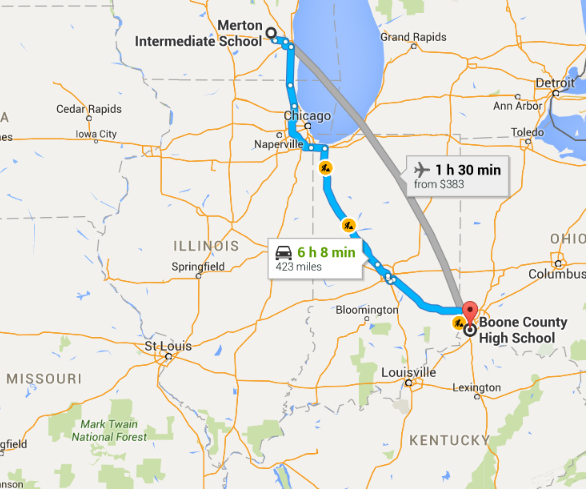In my last post, I began a series focused on My One Word: Connected. I used the National PTA Standards for Family School Partnerships as a framework. Today, I continue the discussion, looking more closely at communicating effectively.
At one time, when we thought of “communicating effectively” with parents, that meant sending out a beginning of the year letter, greeting parents at parent teacher conferences, and sending out a monthly newsletter. To be sure, all of these efforts have merit, but if we truly have in interested in becoming connected to our families and communities, we have to do different and we have to do more.
Different can mean simply changing the format for communication. My friend Jay Posick introduced me to the mobile newsletter Smore, and it has fundamentally changed the way we can reach out to our families. Smore allows schools to create a mobile newsletter that constituents can view on phone, tablets, and computers.

For those parents without the ability to access the newsletter, we can print it our for them. Those parents who can access our Smore can watch videos of student performances, “peek” into the school by viewing pictures and reading write-ups about activities and field trips. Smore also gives school leaders metrics so they can analyze the reach of their communication and see which newsletters had the most impact with parents and the community.
Facebook has emerged as important aspect of our communication efforts. I wrote about the “rebirth” of our Facebook page back in February of 2015; at the time, we had few people who even knew CMS had a Facebook page. As of today, we have 351 “Likes,” and parents and extended families look to Facebook as the best option to follow their children and know what is happening at the middle school.

Once again, metrics allow us to know from where our readers hail, and we can even tell which posts have the most reach, engagement, and impact [Hint: If you want to see a spike in engagement, post video of your students doing AWESOME in the classroom]. I truly believe this is a case of “If you build it, they will come.”
We also use tools like the mobile app we built using the awesome como.com, and School Messenger. Lately, though, we have started to work even more closely with families to shape our communication avenues.
Many of our families lack a computer, and many also do not have internet or wifi at home, but they do have smart phones with data plans. We have had parents communicate to us that they would prefer text messages to phone calls or emails, so we have begun developing PD to help our staff utilize Remind as another way to connect with parents. It would be difficult to say we communicate effectively if we did not provide communication in the format they request.
I have a final thought about communicating effectively. While all of these tech tools provide excellent options to communicate with parents, families, and the community, they cannot replace good old fashioned face-to-face conversations in many cases. In creating an app or establishing a social presence, our goal remains to have parents and the community view Clintonville Middle School as “their” school. Ultimately, we hope these different ways of connecting with our parents and families welcomes them into the building and deepens our conversations about how we can best serve them and meet the needs of their child. I know that many who know me might find it strange that I would advocate for non-techy communication, but sometimes it is the best way to form real partnerships with the families we serve.
What forms of communication do you use with your school community? How effective are are the tools, traditional or otherwise, that you use to communicate? I’d love to hear your thoughts!

